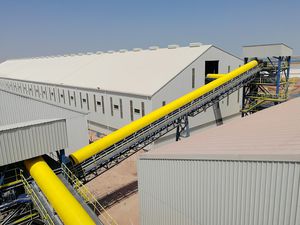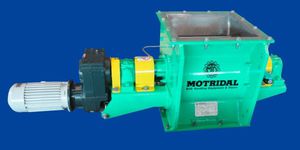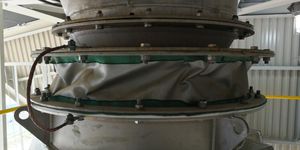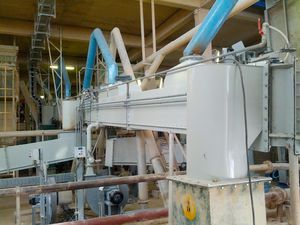
- Packing - Handling - Logistics
- Conveying
- Belt conveyor
- MOTRIDAL S.p.A.
Belt conveyor horizontalcurvedvertical






Add to favorites
Compare this product
Characteristics
- Technology
- belt
- Form
- horizontal, curved, vertical
- Transported product
- for bulk materials
- Other characteristics
- tubular, loading
- Effective width
Max.: 2,550 mm
(100 in)Min.: 600 mm
(24 in)
Description
These machines consist of driving and return heads and loading areas identical to those of a standard belt conveyor, from which they differ in the particular shape of the central section.
After the loading point, the belt is folded around the material and assumes a tubular shape along the whole length of both upper and return strand.
Special hexagonal idler stations, installed on properly spaced panels, keep the round shape of the belt. Before the drive pulley the belt opens again and the material is discharged in the traditional way.
Thanks to the complete enclosure of the belt, which prevents all types of material leakage, pipe conveyors are capable of both horizontal and vertical curves, negotiating obstacles and existing structures.
MINIMUM SPACE REQUIREMENTS
The section of a pipe conveyor is smaller than the equivalent belt conveyor, therefore space requirements are minimum and weight of structures and supports are lower. As the material is transported inside a tubular belt it therefore allows for a higher angle of slope of the conveyor: a single pipe conveyor in some cases can replace the combination of belt conveyor and bucket elevator.
MATERIAL PROTECTED FROM EXTERNAL CONTAMINATION
The belt of the pipe conveyor is folded into a dust-tight enclosure, which prevents material leakage and protects from external contamination, including water and moisture.
LOW MAINTENANCE COSTS
Maintenance costs are minimised. The idle rollers always work on the “clean” side of the belt thus further improving the already low maintenance characteristics of a standard belt conveyor.
Catalogs
No catalogs are available for this product.
See all of MOTRIDAL S.p.A. ‘s catalogsRelated Searches
- Rail conveyor
- Belt conveyor
- Conveyor for the food industry
- Feeder
- Drag chain conveyor
- Stainless steel conveyor
- Materials handling conveyor
- Bulk products conveyor
- Screw conveyor
- Transfer conveyor
- Curved rail conveyor
- Conveyor for the pharmaceutical industry
- Loading conveyor
- Conveyor system
- Vibrating feeder
- Conveyor for the recycling industry
- Vertical conveyor
- Conveyor for the automotive industry
- Construction conveyor
- Rotary valve
*Prices are pre-tax. They exclude delivery charges and customs duties and do not include additional charges for installation or activation options. Prices are indicative only and may vary by country, with changes to the cost of raw materials and exchange rates.















